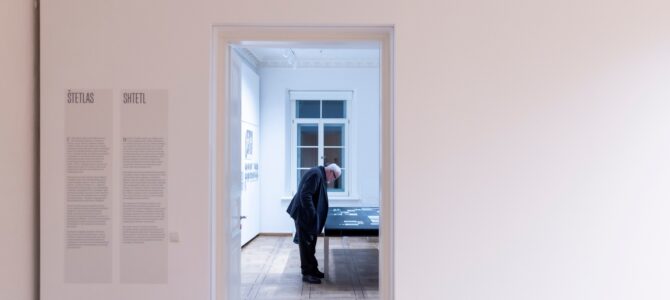interviewed by Katrina Zeiter
On the topic of Litvak history and personalities, one of the Community’s most active members, Geršonas Taicas, always provides interesting facts and facts unknown even to seasoned researchers. Celebrating his 75th birthday this year, his greatest passion is genealogy. Like a fish in its natural element, he dives into the archives, discovering incredible connections which force us to consider history from another perspective, and also helping Litvak descendants scattered around the world find their family roots. A Litvak himself, he can speak for hours on the notable chef and cooking author Fania Lewando, the crooner Daniel Dolskis and former British prime minister Boris Johnson, but in this interview we spoke about the genealogist’s own story which serves as a mirror of a period in Lithuanian Jewish life which fewer and fewer now remember.
What are your first childhood memories?
I was born in Ukmergė [Vilkomir] in 1949 to a family who had been incarcerated as “enemies of the people” at a gulag in Krasnoyarsk in Siberia. My father Alter was an accountant and my mother Masha was a teacher.
I was named in honor of my grandfather Gershon Taits (1870-1919). He was a miller and had a water mill on the banks of the Siesartis River near the Vidiškiai settlement.
There were four of us in my family: my parents, my younger brother Ruvimas and I.
We lived in the town center in the red brick building at Vilniaus street no. 4 which had been built back in 1903. While there were more than 10,000 Jews living in Ukmergė before the war, at the time I was born there were barely five families left. Three of them lived adjacent to the same courtyard we did.
My parents’ apartment was the unofficial center where the Jews of Ukmergė often gathered on Saturdays and holidays. The happiest and loudest time was on Sundays after market, when former residents of Ukmergė would come back from Kaunas and Vilnius to talk, rest, eat and drink. You have to understand that buying food for the week at the Ukmergė market was much cheaper than in Vilnius and Kaunas. Everything was available there: goose, duck, chicken, butter, sour cream, eggs, Antonovka apples with their savor of former times, berries and other goods. Visitors usually spoke the Yiddish language, and more rarely Lithuanian or Russian.
We baked matzo on our stove in our kitchen before Passover. Neighbors bought their own flour and brought it to us, because the purchase of flour was restricted, with one person allowed to buy just one kilogram.
My parents’ apartment with its balcony overlooking Vilniaus street was on the second floor reached by steep creaking wooden stairs. There was no water, either, and only after some time was a water supply set up through the efforts of my father, so my brother and I spent a lot of time carrying many buckets of water and birch firewood for the furnace and stove, so there would be matzo on the holiday table.
It was my and my brother’s job to perforate the unbaked sheets with dotted lines for a beautiful form and to make breaking them easier after baking. It was very hot in the kitchen, like noon in the Egyptian desert where the Jews wandered thousands of years ago. So my brother and I did our jobs in tandem, because we couldn’t stand the heat for long.
As far as I remember our family also celebrated Rosh Hashanah and Yom Kippur, the Day of Atonement.
I really enjoyed reading books as a child and from an early age I went by myself to the town library. I especially like books about geological and archaeological expeditions to the various countries of the world.
I also taught myself how to play chess from books.

Photo: A sign reading “Clothes” at Vilniaus street no. 4 in Ukmergė, 1970 (from personal collection).
My parents’ apartment was barely half of a kilometer away from the Šventoji River. Other boys from my courtyard and I, about ten children, used to go every evening to swim at a place the older residents in town used to call Garbarnia. This was where in the first part of the 19th century the brothers Hirsh and Israel Garbar built a leather-working factory on the banks of the river (Garbiarna is Polish for a leather-tanning operation). This is where the famous Jewish factory owner, patron and millionaire Chaim Frenkel began.
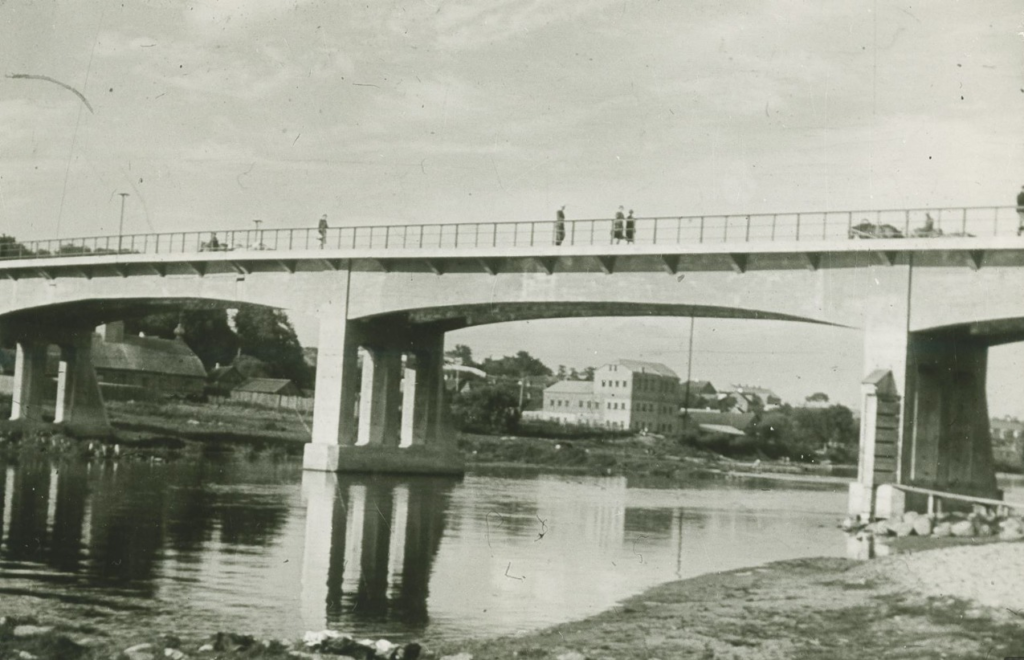
Photo: Leather factory beyond the bridge over the Šventoji River (personal collection).
The swimming had its own order: first the children waded in and splashed around with the adolescents watching on from the shore, then the older ones jumped in the water. We braced ourselves swimming in the water right up until the beginning of October.
When the school year began we used to run to the river right after class let out. To keep our parents from finding out, we used to swim without our underwear, because we wouldn’t be able to hide our wet clothes from them.
I was sufficiently large in stature that I ended up in the athletics school where I played basketball. We played in the building which had been the Great Synagogue in Ukmergė before the war. The hall was almost unheated and the thick synagogue walls didn’t allow the premises to warm up above 18 degrees Celsius even in summer. Never mind winter, when the temperature often plunged to below 8 degrees. Once a basketball team of young men from Kaunas came to play against us. These athletes were accustomed to playing only in heated facilities. They couldn’t warm up and lost the game. That year we, the team from Ukmergė whose starting five players included me, took a respectful third place in Lithuania, while the team from Kaunas only took fourth.

Photo: Chaim Frenkel.

Photo: Great Synagogue, before 1940, Ukmergė.
Watching your work recently I thought you had a degree in history, but it turns out I was wrong. What did you study?
When I completed high school I matriculated at what was then the Radio-Electronics Faculty at the Kaunas Polytechnic Institute. During the first two years classes were held in the premises of the former Pieno Centras [Milk Center] cooperative on Freedom Alley. Legendary coach and captain of the Žalgiris basketball team Henrikas Giedraitis led the physical education classes and exercises.


Photo: Legendary basketball player Henrikas Giedraitis and Samogitian bishop Merkelis Giedraitis (1536-1609). Geršonas Taicas noticed a similarity and wonders if the two men could be related.
He didn’t know that people were entering the Kaunas sports hall to watch basketball with counterfeit tickets made from cut-up newspaper clippings. These tickets only cost a half ruble and could be purchased from acquaintances at the dormitory. Back then everyone, including students who came from elsewhere, were fans of Žalgiris who battled bravely against CSKA Moscow–the Army team of the Armed Forces Sports Society.
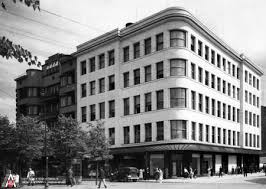
Photo: Pieno Centras building, 1938. To left,
Pažanga building (personal collection).
After studies I received an assignment and went to work at the Electrographic Institute scientific research institute in Vilnius. After three years I received a family communal apartment in the Antakalnis neighborhood and my wife Valerija and our first daughter Gitana left Ukmergė and moved in with me in Vilnius.
In 1977 our second child Diana was born and we were faced with the problem of insufficient living space. Three years later I found work with a communications enterprise which was under the Ministry of Construction where it was possible to get an apartment more quickly. So five years later I acquired a three-room cooperative apartment and an automobile, a VAZ-3, which is also known as the Žiguliukas 3. I still remember now the feeling of how happy our entire family was, we were very happy.
In 1990 I worked as head of department for a supply enterprise which supplied communications cables to Ministry of Communications operations. Our work collective was very active politically. All of us stood vigil at the Vilnius Television Tower on January 12, 1991, and we took part in the Baltic Way protest.
How was your love of genealogy born?
After Lithuanian independence on March 11, 1990, the Lithuanian archives were opened to the public. Around the year 2000 I began to be interested in my family genealogy. I discovered so many, many more information than I had been told and that my father had known, for example, I found a photograph which portrayed my aunt Sonia. She had been graduated from the Ukmergė Teachers Seminary and worked in that profession. My aunt and her husband Joselis Freidheimas were shot to death by the Nazis and their subordinates in the Pivonija Forest. From my father’s entire family, only he and aunt Roza survived the Holocaust. Roza had immigrated to South Africa in 1936.
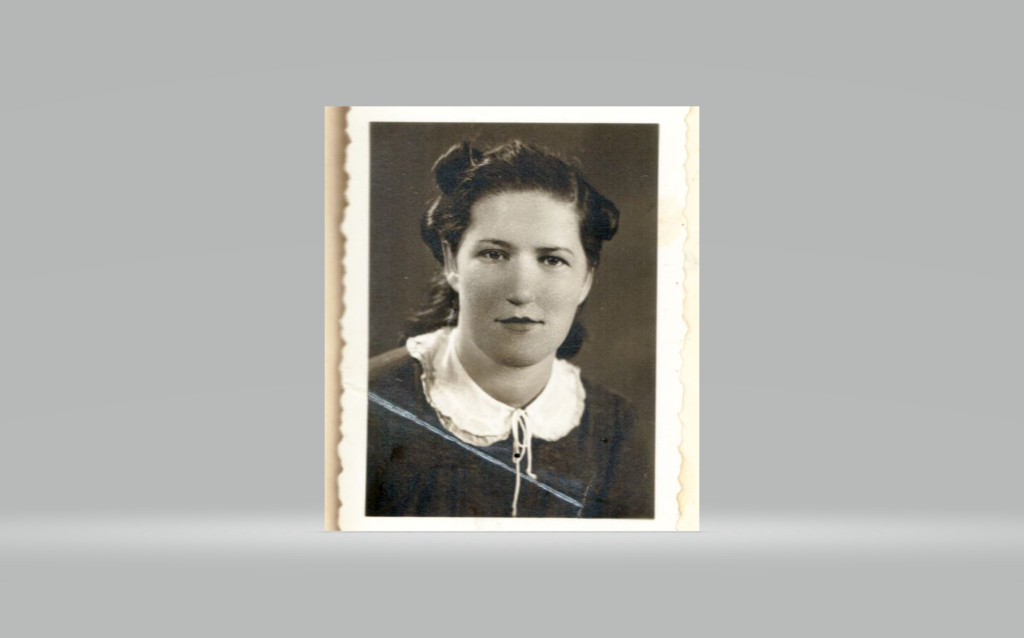
Photo: Sonia Freidheimienė-Taicaitė (1918-1941) (personal collection).
So little by little by taking an interest I became engaged in genealogy and research into Litvak history. I spent an awful lot of time working in the Lithuanian archives.
Which of your genealogical discoveries are most interesting to you personally?
Among the discoveries of which I am very proud is the birth record of the poet Osip Mandelshtam who had Litvak roots. The thing is, all earlier records indicated the wrong date of birth for him and there was a memorial plaque commemorating him on the wrong street, not where he was actually born. I was able to located documents from 1896 when the parents of the poet lived in Kaunas.
Among the more valuable discoveries were documents dated 1915 which detailed a business deal by professor Jonas Basanavičius for the purchase of a plot of land on Tauro kalnas [Taurus Hill] in Vilnius.
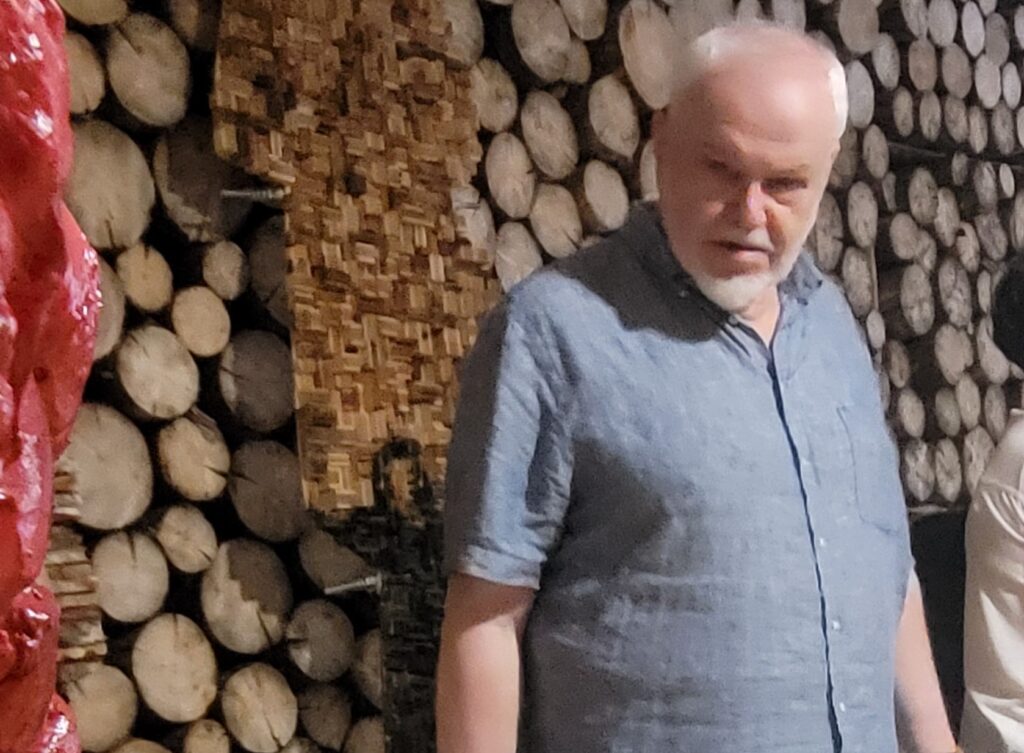
Photo: Celebrating his 75th birthday this year, Geršonas Taicas hasn’t lost his sense of curiosity and is one of our most active Lithuanian Jewish Community members (photo by LJC staff).
I found out where the singer Daniel Dolskis was born and where his parents lived in Vilnius. I also found documents about the forefathers of former British prime minister Boris Johnson who had come from Lithuania. I also discovered the stories of Litvaks who are completely unknown in Lithuania but well known in the world, including scientists, actors, directors, Zionists and others.
I frequently find factual inconsistencies with information publicly conveyed in Lithuania regarding famous people. My biographical and genealogical research is often broader in scope as well and I find new, hitherto unknown facts.
For instance, the history of Chaim Frenkel. I figured out that the leather factory he established in Šiauliai [Shavl] was a joint-stock company with all of his brothers and sisters as shareholders. This factory required tremendous turnover capital and sales of its products were the largest in the market at that time. Chaim Frenkel found a partner to accomplish this, a woman from Šiauliai named Matilda who was living in St. Petersburg in the Russian Empire. Incidentally following the monetary reform in the Russian Empire in 1897 the gold coins were named after her, matildas.
All the gold coins were stamped using molds made by Vilner Litvak Abraham Grilches. Before that his father Aven Grilches’s coint-stamping molds were used to make the gold coins. The latter’s engravings in the Vilna Edition of the Talmud of 1880 are canonical and are still being printed today.
I’m sure you already know Chiune Sugihara was a Japanese spy with diplomatic cover. He and two of his wives were baptized in the Russian Orthodox Church. Chiune spoke accentless Russian and had a wonderful command of Russian literature. In other words, he was without doubt a Russophile.
In order to facilitate the flight of people fleeing misfortune through the Soviet Union to Japan, one had to pay an astronomical sum for those days, one person cost about 4,000 litai, or 20 monthly salaries of a skilled worker. The total sum paid to the Soviet Union for the refugees was about 24,000,000 litai or US $1,200,000.
Along with the Jewish families who made use of the visas issued by the Japanese diplomat, about fifty Polish families immigrated, in total around 200 people. Another 800 or so made the trip with counterfeit copies of Sugihara’s visas. I see the significance in looking for new and interesting facts and also in helping people learn more about the stories of their families and loved one. This is my calling.
§§§
If you’d like to learn more interesting facts about your own family, contact Geršonas Taicas by email at gtaicas@gmail.com.


